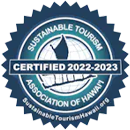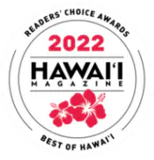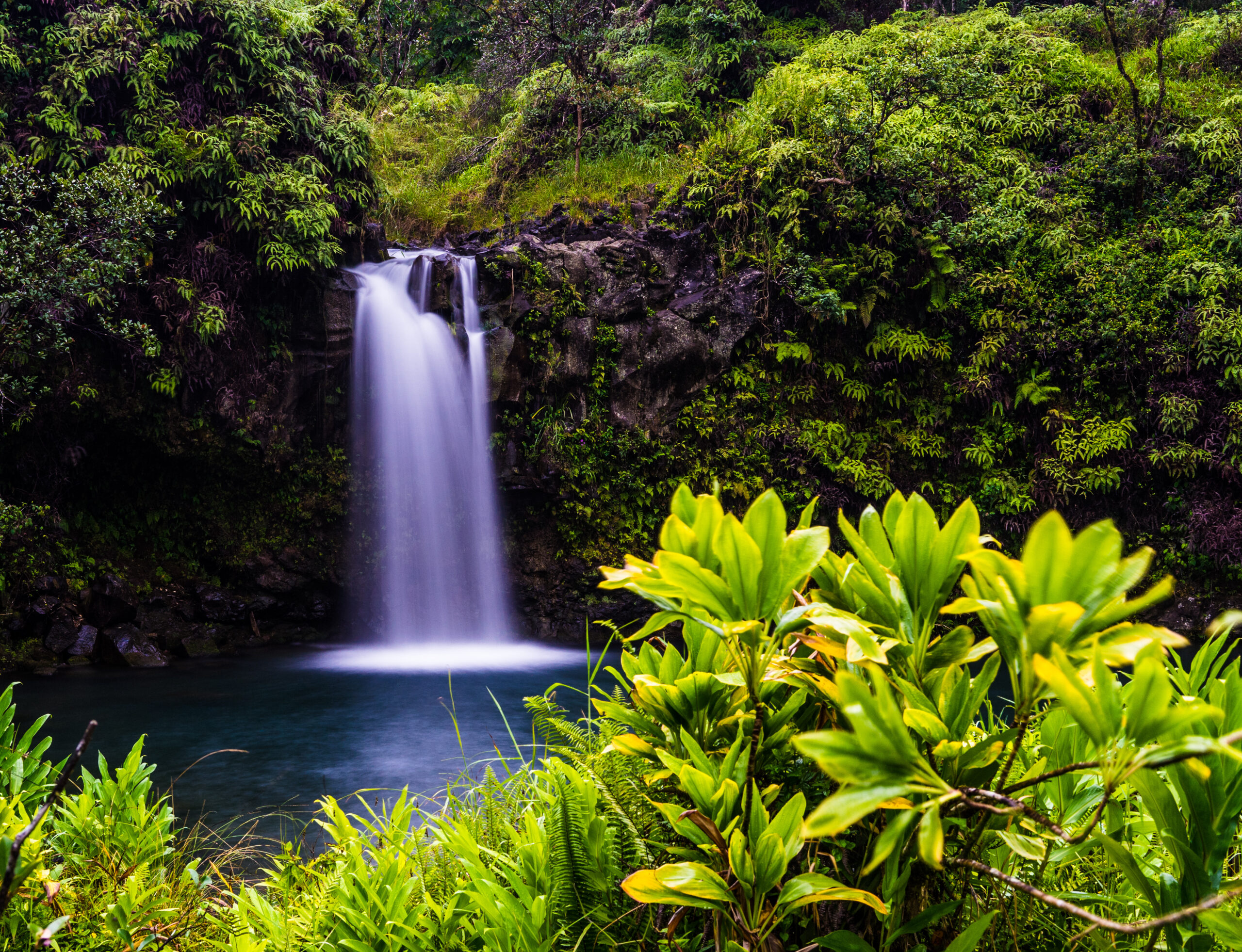
Maui Travel Guide – Hawaiʻi in August
August is generally a pleasant time to visit Maui with warm temperatures, abundant sunshine, and low rainfall. It’s a great time for beach activities, snorkeling, and exploring the island. You might even encounter fewer crowds compared to other peak season months.
Planning ahead is crucial for a smooth and enjoyable trip to Maui, Hawaiʻi. Booking accommodations, rental cars, popular tours, and activities in advance can help secure better prices and ensure availability. This proactive approach also allows for more flexibility in crafting your itinerary and maximizing your time on the island.
Maui Weather in August
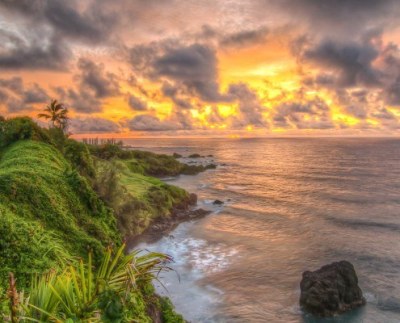 August is a great time to visit Maui Island for warm, sunny weather and various activities, though it is important to remember a few things about this season.
August is a great time to visit Maui Island for warm, sunny weather and various activities, though it is important to remember a few things about this season.
Sunrise & Sunset:
- Sunrise in Maui during August will be around 5:31 am
- Sunset in Maui during August will be around 6:42 pm
Temperature:
- Expect high temperatures in the mid to high 80s Fahrenheit (around 31°C) during the day.
- Low temperatures will typically be in the mid-70s Fahrenheit (around 24°C) at night.
- The average daily high temperature is 88°F (31°C).
- The average daily low temperature is 72°F (22°C).
- August is generally the warmest month in Maui.
- The average water temperature is around 79°F (26°C), perfect for swimming, snorkeling, and surfing.
Rainfall:
- August falls within Maui’s dry season, which typically runs from April to October.
- You can expect minimal rainfall, especially in the southern and western parts of the island, like Wailea and Lahaina.
- However, localized showers may still occur, so packing a light rain jacket is recommended.
Wind:
- Trade winds blow consistently throughout August, often averaging between 10-20 miles per hour (16-32 km/h).
- Winds usually don’t pick up until late morning.
Overall:
- August in Maui offers warm, sunny days, perfect for enjoying the beaches and outdoor activities.
- It is hurricane season in the Pacific redion, but hurricanes vary rarely make landfall in Maui.
- It’s a popular time to visit, so be prepared by planning ahead.
- The weather is generally great for families and those looking for a relaxing island escape
Learn more on the Road to Hāna
Maui Activities in August
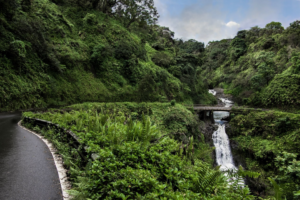
Popular Maui activities during August include scenic drives along the Road to Hana, exploring Haleakalā National Park, snorkeling or diving at Molokini Crater, and relaxing on beautiful beaches across the island. August is also a great time for water sports like kayaking and windsurfing, and you might even catch the start of whale watching season!
Travel Along the Road to Hāna
The Road to Hāna is an iconic drive winding along Maui’s eastern coastline. The 64.4-mile stretch of Hāna Highway takes you on a journey where you can stop at many amazing sites that call Maui home, including the
Garden of Eden Arboretum, Waiʻānapanapa State Park, and Wailua Falls. This adventure is a whole day so bring plenty of water and snacks.
Snorkel or Dive in Molokini Crater
Molokini Crater is a partially submerged volcanic caldera that is one of the most unique snorkeling experiences. Dive below the waves and witness our vibrant coral reefs, colorful fish, and sea turtles. The calm August waters will provide the best environment to see it all. You will want to book your tour in advance, as they tend to fill up quickly during peak season.
Explore Haleakalā National Park
Haleakalā National Park offers a unique opportunity to hike across volcanic terrain, see rare endemic species, and experience a dormant volcano. You should be prepared for changes in elevation and variable weather conditions, so bringing the right clothing matters. Sunrise and sunset viewings from the summit are popular but do require reservations. If you’re there at night,
Haleakalā is the perfect location for stargazing.
Relax on The Beach
With so many amazing beaches, you’re left with the difficult choice of which one to spend a day at. We’ll help you out. Check out our list of the best beaches here (and for some secret beaches, click here). Spending a day in the sun and enjoying the warm waters August brings is a fantastic way to kick back, splash around, and get some well-deserved R&R the Maui way.
Experience a Traditional Lūʻau
Immerse yourself in our Hawaiian culture by attending a traditional lūʻau. Feast on kalua pig, poi, and other local delicacies, while enjoying traditional music and hula performances. It’s important to check with your hotel to see if they have recommendations and to reserve your place in advance.
Must Eats in Maui
In Maui during August, you can find a variety of delicious and fresh food, with August being a great time to enjoy local ingredients. Seafood, especially grilled mahi-mahi, is abundant. Other local favorites include poke bowls, kalua pig, and poi. For a unique experience, try the Huli Huli chicken at Koki Beach or explore the food trucks for great, affordable options.
Checklist for Maui in August
For a trip to Maui in August, pack lightweight, breathable clothing, swimwear, sun protection (hats, sunglasses, reef-safe sunscreen), and comfortable shoes for walking and hiking. Don’t forget essentials like a reusable water bottle, a waterproof phone case, and a jacket or sweater for cooler evenings or Haleakala’s summit, which can drop as low as 41.9°F (approximately 5.5°C) in August.
What to Pack
- Lightweight and breathable clothing. It will be hot, so think of material like linen and cotton.
- Swimwear. It might seem obvious but an extra set or two won’t hurt.
- Reef-safe sunscreen is essential. We want you to be protected, as well as our delicate coral reefs.
- Comfortable walking or hiking shoes, especially if you plan on exploring our towns and national parks.
- Light rain jacket in case of brief showers.
What to Plan
- Any accommodations if you plan on taking mini trips once here on Maui. Traveling here during peak season may require some planning farther out.
- Rental car if you plan on exploring the island and want your own transportation.
- Popular tours and activities, a Molokini snorkeling trip, or dinner cruise reservations.
- Reservations at popular restaurants you’re hoping to try.
Experience the Famous Haleakalā Sunrise Tour
Travel Pono
We want to help you do those things “pono” (in the right way).
Our Commitment:
“To impart to our guests a genuine understanding of the aloha spirit and help them to travel pono by fostering care and respect for our community, environment and host culture.”
The Hawaiian culture is all about sharing. Sharing from ancient times through to recent history, they have shared to such an extent that they’ve given almost everything they had, including their lives. We all want Hawaiian culture to grow and thrive again. Simply feeling the aloha and expressing it shows respect for the culture, and helps it grow stronger. A resident shows respect to a visitor by sharing aloha and welcoming the visitor by returning a friendly wave. The honor system is alive and well at most fruit stands across East Maui due to the trust the residents have in the visitors.
A visitor can reciprocate this trust and kindness by learning about a few things that can make life better for the area’s residents. Simple things, like driving according to road conditions and pulling off to let resident drivers go ahead is always a kind gesture. No one wants to have to constantly deal with trespassers, (especially the intentional ones), or badly parked vehicles – and that applies to anywhere in the world. Think about your actions as if it was your backyard. How would you want visitors to act towards you and your property? Now you know what is pono. Simply treat others as you would like to be treated and aloha will rule the day.
Keep in mind that residents need to go places too. Please move off the road if you decide to slow down or stop for a photo op or any other purpose, including, (but not limited to): standing in the road while picture taking; while driving a lot slower just to take a longer look (AKA: being a “looky loo”) or attempting to park. Make sure you’re completely off the road no matter why you’re stopping. Getting run into – or worse, getting run over, on what was supposed to be your “best day on Maui”, can turn even the best vacation into your worst nightmare.
Please don’t ignore any road signs. They are there for a good reason and visitors are asked to follow them for their own safety and the safety of the residents.
Things You Should Remember To Do to Share Your Aloha
Driving & Residents
Driving can be frustrating, no matter where you’re from, but island driving has it’s own challenges. Most roads in Maui were built over 100 years ago, during the heyday of the sugarcane industry, from little more than dirt pathways. Constant upgrades (widening & lane additions) have developed over the years for the main arteries which have resulted in several multi lane highways. Resort areas have experienced improved traffic flow, but there are few alternate routes when traffic gets snarled.
Many rural and residential roads (especially the road to Hana) are narrow with utility poles and vegetation quite close to the road’s edges. Though this seems dangerous (and it can be), residents have been driving these roads for generations and know every twist and bend. When visiting most tourist areas in the world, it can seem like the residents are the crazy drivers, and if they’re frustrated with heavy rental car traffic while trying to get to work or home, that can certainly be the case, but they also know the road well and know where they’re headed, whereas tourists generally don’t. The main thing to keep in mind is to slow down and let resident drivers pass. Be sure to give yourself a little extra time and just enjoy the scenery!
Coral Damage & Reef Safe Sunscreen
Recent research suggests there is ongoing coral bleaching happening all around Maui. Studies have found that harmful chemicals in commercial sunscreens may be contributing to this decline of our reef systems. Another reason reefs are becoming damaged is visitors walking on them. Not only can you become injured and incur nasty staph infections from walking on coral it also causes coral breakage which can take years for the reef to recover from.
E komo mai! We’re thrilled you chose to visit Maui for your vacation.




